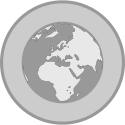Rugby 7 na World Games 2009
| |||
| |||
| Szczegóły turnieju | |||
| Gospodarz | Kaohsiung, | ||
|---|---|---|---|
| Termin | 24–25 lipca 2009 | ||
| Liczba drużyn | 8 | ||
| Stadiony | 1 (w 1 mieście) | ||
| Statystyki turnieju | |||
| Liczba meczów | 24 | ||
Turniej rugby 7 na World Games 2009 odbył się w dniach 24–25 lipca 2009 roku na mieszczącym 40 000 widzów World Games Stadium[1]. Była to trzecia edycja zawodów w tej dyscyplinie na World Games.
W czerwcu 2009 roku Międzynarodowa Rada Rugby wybrała osiem rywalizujących zespołów[2], 14 lipca opublikowała podział na grupy oraz rozkład gier[3], zaś 20 lipca udostępniła składy drużyn[4].
Zespół Hongkongu został zaproszony do wzięcia udziału w zawodach po tym, jak z występu zrezygnowała reprezentacja Chin[5].
Tytuł zdobyty przed czterema latami obroniła reprezentacja Fiji[6].
Uczestnicy
Szczegółowe wyniki
Godziny rozpoczęcia meczów podane według czasu lokalnego[7].
Grupa A
|
| ||||||||||||||||||||||||||||||||||||||||||||||||||
Grupa B
|
| ||||||||||||||||||||||||||||||||||||||||||||||||||
Faza pucharowa
| Ćwierćfinały | Półfinały | Finał | |||||||||||
| 25 lipca 2009 10:00 | 25 lipca 2009 12:50 | 25 lipca 2009 15:25 | |||||||||||
| | 39 | | 7 | | 43 | ||||||||
| | 0 | | 21 | | 10 | ||||||||
| Mecz o 3. miejsce | |||||||||||||
| 25 lipca 2009 10:25 | 25 lipca 2009 13:15 | 25 lipca 2009 15:00 | |||||||||||
| | 5 | | 19 | | 17 | ||||||||
| | 28 | | 12 | | 0 | ||||||||
| Mecz o 5. miejsce | |||||||||||||
| 25 lipca 2009 10:50 | 25 lipca 2009 12:00 | 25 lipca 2009 14:25 | |||||||||||
| | 0 | | 12 | | 19 | ||||||||
| | 17 | | 17 | | 21 | ||||||||
| Mecz o 7. miejsce | |||||||||||||
| 25 lipca 2009 11:15 | 25 lipca 2009 12:25 | 25 lipca 2009 14:00 | |||||||||||
| | 19 | | 24 | | 5 | ||||||||
| | 12 | | 29 | | 19 | ||||||||
Klasyfikacja końcowa
| Miejsce | Reprezentacja |
|---|---|
| 1 | |
| 2 | |
| 3 | |
| 4 | |
| 5 | |
| 6 | |
| 7 | |
| 8 |
Medaliści
| Konkurencja | |||
|---|---|---|---|
| Turniej mężczyzn | Seremaia Burotu Suliasi Ramasima Sean Morrell Watisoni Votu Nasoni Roko Emosi Vucago Jiuta Lutumailagi Pio Tuwai Apisai Naiyabo Taniela Maravunawasawasa Orisi Sareki Peni Rokodiva | Sebastião Cunha Diogo Mateus Bernardo Silveira Pedro Leal Pedro Silva Gonçalo Foro Veltioven Tavares Frederico Oliveira Francisco Serra Ricardo Dias Hugo Valente Manuel Costa | Mpho Mbiyozo Neil Powell Frankie Horne Cecil Afrika Marius Schoeman Kyle Brown Renfred Dazel Rayno Benjamin Philip Snyman Mzwandile Stick Paul Delport Chase Minnaar |
Przypisy
- ↑ World Games Stadium (ang.). worldgames2009.tw @ web.archive.org. [dostęp 2013-05-11].
- ↑ Top Sevens teams to compete at World Games (ang.). irb.com. [dostęp 2012-05-18]. [zarchiwizowane z tego adresu (2009-06-18)].
- ↑ World Games Sevens pools and schedule set (ang.). irb.com. [dostęp 2012-05-18]. [zarchiwizowane z tego adresu (2009-07-19)].
- ↑ Eight nations prepare for World Games Sevens (ang.). irb.com. [dostęp 2012-05-18]. [zarchiwizowane z tego adresu (2013-10-22)].
- ↑ China blasted for snubbing World Games in Taiwan (ang.). scmp.com. [dostęp 2013-05-11]. [zarchiwizowane z tego adresu (2015-03-08)].
- ↑ Fiji retain World Games Gold (ang.). irb.com. [dostęp 2012-05-18]. [zarchiwizowane z tego adresu (2009-07-28)].
- ↑ Czas na Tajwanie → UTC+08:00
Bibliografia
- World Games VIII (ang.). rugby7.com. [dostęp 2013-05-11]. [zarchiwizowane z tego adresu (2015-09-30)].
- Rugby 7s Day 1 (ang.). results.worldgames2009.tw @ web.archive.org. [dostęp 2013-05-11].
- Rugby 7s Day 2 (ang.). results.worldgames2009.tw @ web.archive.org. [dostęp 2013-05-11].
Media użyte na tej stronie
Autor: https://phabricator.wikimedia.org/diffusion/GOJU/browse/master/AUTHORS.txt, Licencja: MIT
An icon from the OOjs UI MediaWiki lib.
Autor: https://phabricator.wikimedia.org/diffusion/GOJU/browse/master/AUTHORS.txt, Licencja: MIT
An icon from the OOjs UI MediaWiki lib.
Chinese Taipei Olympic Flag. According to the official website of Chinese Taipei Olympic Committee, Blue Sky(circle) & White Sun(triangles) above the Olympic rings is neither the National Emblem of the Republic of China, nor the Party Emblem of Kuomintang (KMT), but a design in between, where the triangles do not extend to the edge of the blue circle, as registered at International Olympic Committee in 1981 and digitally rendered in 2013. Besides, the blue outline of the five-petaled plum blossom is broader than the red one. Moreover, the CMYK code of the blue one and the Blue Sky & White Sun is "C100-M100-Y0-K0", and different from the Olympic rings (C100-M25-Y0-K0). Note that it's the only version recognized by IOC.
Flag of Portugal, created by Columbano Bordalo Pinheiro (1857-1929), officially adopted by Portuguese government in June 30th 1911 (in use since about November 1910). Color shades matching the RGB values officially reccomended here. (PMS values should be used for direct ink or textile; CMYK for 4-color offset printing on paper; this is an image for screen display, RGB should be used.)
The flag of Navassa Island is simply the United States flag. It does not have a "local" flag or "unofficial" flag; it is an uninhabited island. The version with a profile view was based on Flags of the World and as a fictional design has no status warranting a place on any Wiki. It was made up by a random person with no connection to the island, it has never flown on the island, and it has never received any sort of recognition or validation by any authority. The person quoted on that page has no authority to bestow a flag, "unofficial" or otherwise, on the island.
Autor:
- Gold_medal_world_centered.svg by Maix
- derivative work: Mboro (talk)
A gold medal with a globe icon
Autor:
- Silver_medal_world_centered.svg by Maix
- derivative work: Mboro (talk)
A silver medal with a globe icon
Autor:
- Bronze_medal_world_centered.svg by Maix
- derivative work: Mboro (talk)
A bronze medal with a globe icon
Pictograms of Olympic sports - Rugby union. This is unofficial sample picture. Images of official Olympic pictograms for 1948 Summer Olympics and all Summer Olympics since 1964 can be found in corresponding Official Reports.
Autor: CT Snow from Hsinchu, Taiwan, Licencja: CC BY 2.0
South Africa and Argentina tangle in rugby seven at the World Games
















